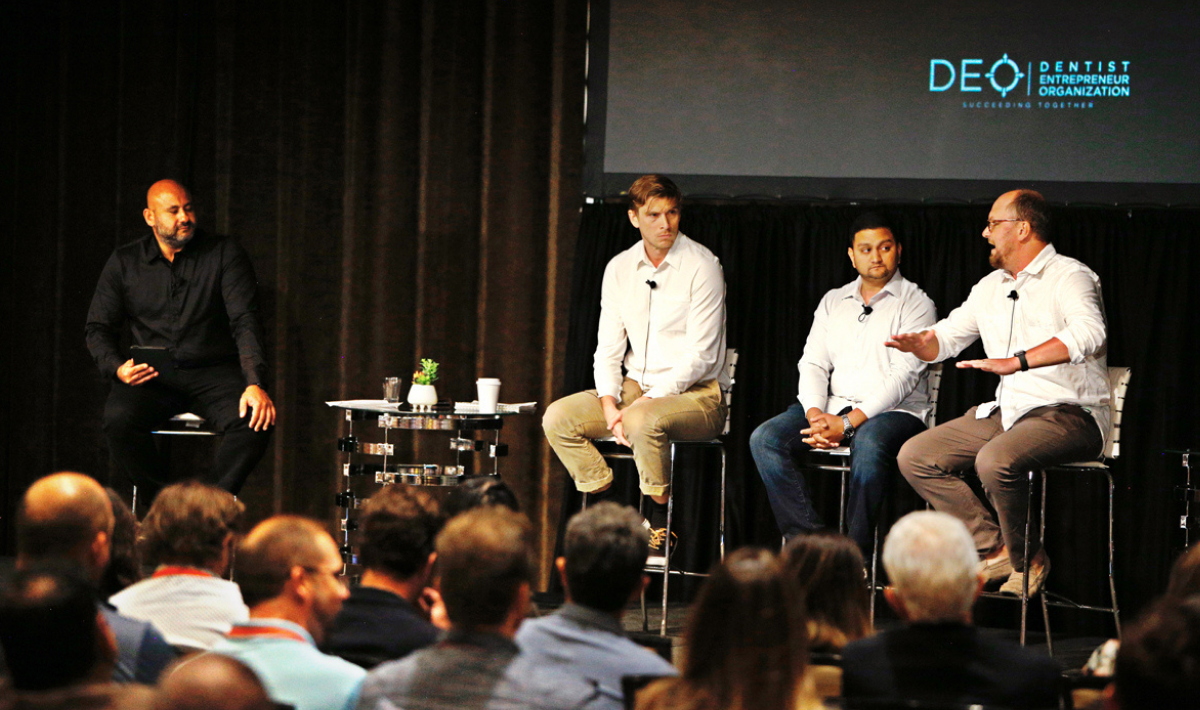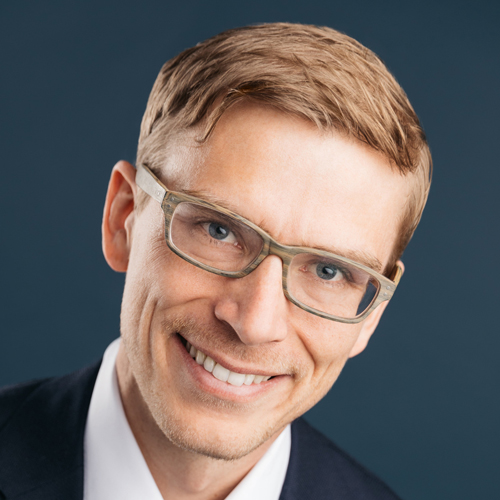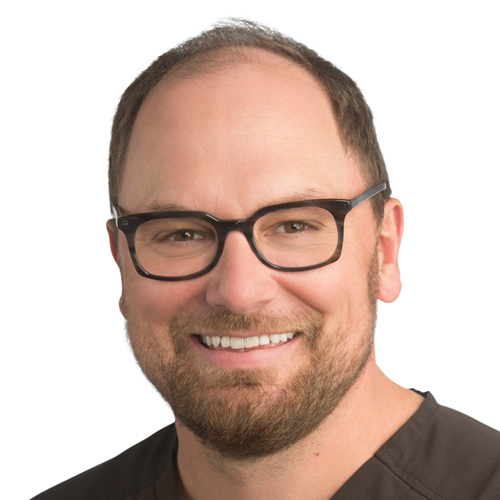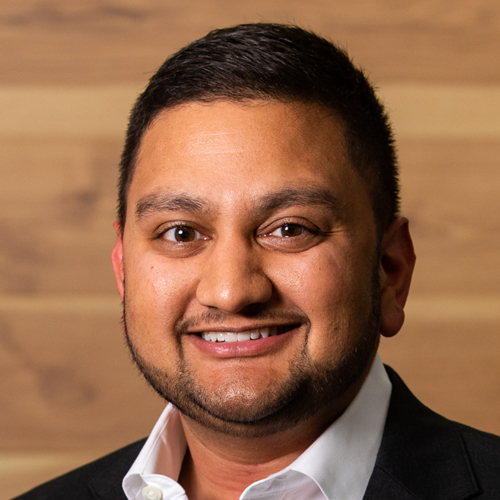Three DSO owners share how their cultures benefit their locations and bottom lines.
By Daniel Beaird
Meet the panelists
Panelists for 10 Systems & Best Practices To Increase Your Dental Organization’s Profitability, presented at this summer’s 2022 DEO Growth Summit, held at the Phoenician Resort in Scottsdale, Arizona.
Dr. Peter Kelly, Co-Founder, brings vast dental experience to Operation Dental, a 13-office organization, as a practicing dentist who owns multiple practices. Along with his general dentistry background, he brings a commitment to superior patient care and provides cutting-edge dental practices. His focus on creating a positive patient experience is bolstered by a professional yet caring demeanor that has earned rave reviews and contributed to a long and successful career. Dr. Kelly embodies the entrepreneurial spirit and is proud to help other dental professionals realize their full potential.
Dr. Joshua Renken, CEO of Renken Dentistry, attended Eastern Illinois University and then the University of Illinois at Chicago where he received his DDS degree. Following associate work in Chicago, Dr. Renken moved to Springfield and opened his first practice, Renken Dentistry, in 2003. In 2018, Dr Renken and his family moved to the Austin Texas area to continue growing the Renken Dentistry group, which currently has six locations.
Dr. Ravi Patel is Director of Clinical Operations, Blueprint Smiles Dental Group, with six locations across the metro-Atlanta area. Blueprint’s model is intended to facilitate a thriving personal and professional life. They have created a professional and fun environment for the team so that work doesn’t feel like work, so in turn, dentistry doesn’t feel like dentistry.
Impacting profitability
Making the leap from running a private practice to owning a DSO is an exciting time, and culture plays a vital role. An ownership mentality throughout the organization is necessary. Ideally, it’s a top down idea that transitions into a bottom up pursuit, incorporating all of a DSO’s practices.
“It’s easy to have that mentality, and profitability, when there’s only one location,” said Dr. Peter Kelly, CEO and co-founder of Operation Dental, based in Florida. “But after multiple locations are added, another degree of leadership comes into play.”
And after opening multiple practices, retaining team members can be a challenge, so onboarding and training them as quickly saves time, energy and money.
“Payroll’s the most expensive line item on a profit-and-loss statement,” said Dr. Ravi Patel of Buford Family Dental in the Atlanta area. “I don’t think anyone hasn’t been burned by that fire, but retaining team members is important. Onboarding and training them quickly helps increase profitability.”
Providing patients a clear path to health also helps profitability.
“We’ve learned the better we get patients moving to health, the higher that top line goes on our operational savings side,” said Dr. Josh Renken, CEO of Renken Dentistry in Austin, Texas. “We move patients step-by-step through every operatory. Our team of hygienists, assistants and doctors speak the same language. Moving patients to greater comprehensive health moves our top line up dramatically.”
Enhancing clinical efficiencies and culture
Renken Dentistry doesn’t have administrative positions. “That’s one of the huge things we’ve done,” Dr. Renken said. “It’s just dentists, assistants and hygienists at all clinical locations.”
Operation Dental’s most profitable offices have dental assistants who carry the burden of treating the patient and getting them to say yes to treatment so the doctors can work more columns.
The Florida DSO is also building a dental assistant school to be a driver of business growth.
“You work with your dental assistants every day. I had to let a doctor go and I took over a practice for eight weeks,” Operation Dental’s Dr. Kelly said. “It was one of the most eye-opening experiences I’ve had in the DSO evolution of my practice.”
If a dental assistant isn’t using supplies correctly, it doesn’t matter how much the DSO lowers its supply costs, for example. “That experience reminded me of the interactions between my dental assistants, patients and front desk, and how important those are in driving profitability,” Dr. Kelly said.
“A dental assistant’s mood is going to be dictated by the dentist’s mood,” he added. “We really preach that to our doctors because when team members endorse you as a dentist and as a human being, then that alignment is created.”
Dr. Kelly says people are motivated by two things: money and appreciation. “We often forget to give appreciation to our employees or our family members,” he said. “We’re busy. We’re focused on what’s wrong and we’re not paying attention to what is actually working, but that’s related to profitability.”
Standardization and leveraging technology
Standardizing equipment can also drive profitability. All the little stuff that’s not thought about, according to Dr. Patel.
“From your chairs to your ultrasonics, broken equipment is a loss of production,” he said. “If you have consistency between your products and equipment, you might be able to use them at another location that doesn’t have them.” And, he adds, the repair technician isn’t working on 15 different types of chairs and will be able to repair something quickly.
He also adds that cutting down on the number of processes an office has can help drive profitability and that’s attainable through technology.
“Just a patient checking into your office, for example. It wasn’t too long ago that we had paper forms that we were filling for every single patient,” Dr. Patel said. “That took 15 minutes, so if you can digitize that then that saves time and time equals money.”
Leadership, lifestyle and human resources
Dr. Patel says his DSO is more of a lifestyle DSO.
“We’re pretty laid back to begin with,” he said. “We’re looking for results at the end of the day, but we’re not open crazy hours and don’t have to be that hard on our staff. If they can find some way to define their niche, they’re going to stay.”
And Dr. Renken’s practices have democratized leadership and management without the presence of office managers. “It’s empowered people to take on more influence and control,” he said. “Before, office managers tended to drive the culture of an office and I didn’t like that.”
Both DSOs have outsourced as much customer relationship management processes as possible so those aren’t dependent upon their team members.
“We onboard and use a training portal for compliance training to go along with our own training,” Dr. Patel said. “Our videos lay out our systems and protocols that help get our people into our organization faster – much faster than we were doing five years ago.”
Dr. Patel’s team also cross trains.
“Your front office team member probably doesn’t need to know how to place an implant, but if they know how to break down a room that helps on busy days or when people are out sick,” he said. “If you have a training system in place, it’s not so much of a burden on yourself. You send them a link to the video and make sure they watch it. Then if they need help, you go help them. But for simple tasks like breaking down a room, it’s not labor intensive.”
And Dr. Renken’s team doesn’t have treatment plan coordinators, so it definitely cross trains.
“I’d say our assistants are well cross trained,” he said. “But I like the idea of team being more specialized in each department and cross training across the department.”
Internal marketing
Cross training teams is a way to fire on all cylinders, which is necessary when marketing to your own patients. A great patient experience is an absolute for a profitable internal referral rate.
“The internal referral rate is huge,” Dr. Kelly said. “Our chief marketing officer is world class. But if you can’t find an amazing marketing person, then a marketing vendor can help grow multiple locations.”
Dr. Kelly bought his practice from an older, retired doctor who didn’t market it. “When I added my chief of operations, he recommended we start using Google for advertising,” Dr. Kelly recounted. “I didn’t believe in it, and he paid for it himself.”
That was a revelation to Dr. Kelly. “I said, ‘wow.’ I looked back at all the years before that and the money I could have made if I had believed in marketing.”
Dr. Patel uses Google for its services. “It’s the first place I looked, and we made sure that our practice reputations were solid there. You can ask your own patients to write reviews and that helps from a global sense of growing your business. Then, you can take the next step of starting to pay for Google ads or working with a marketing company.”







